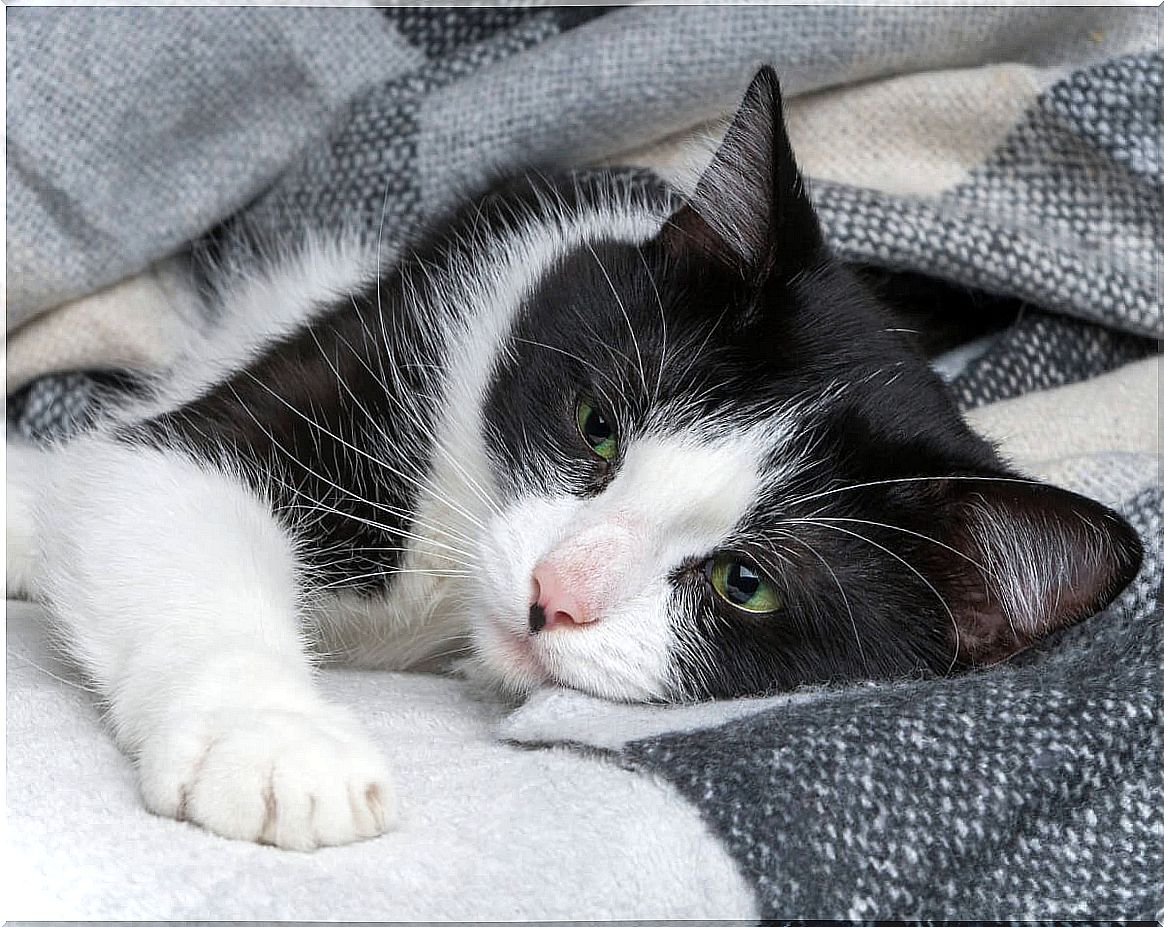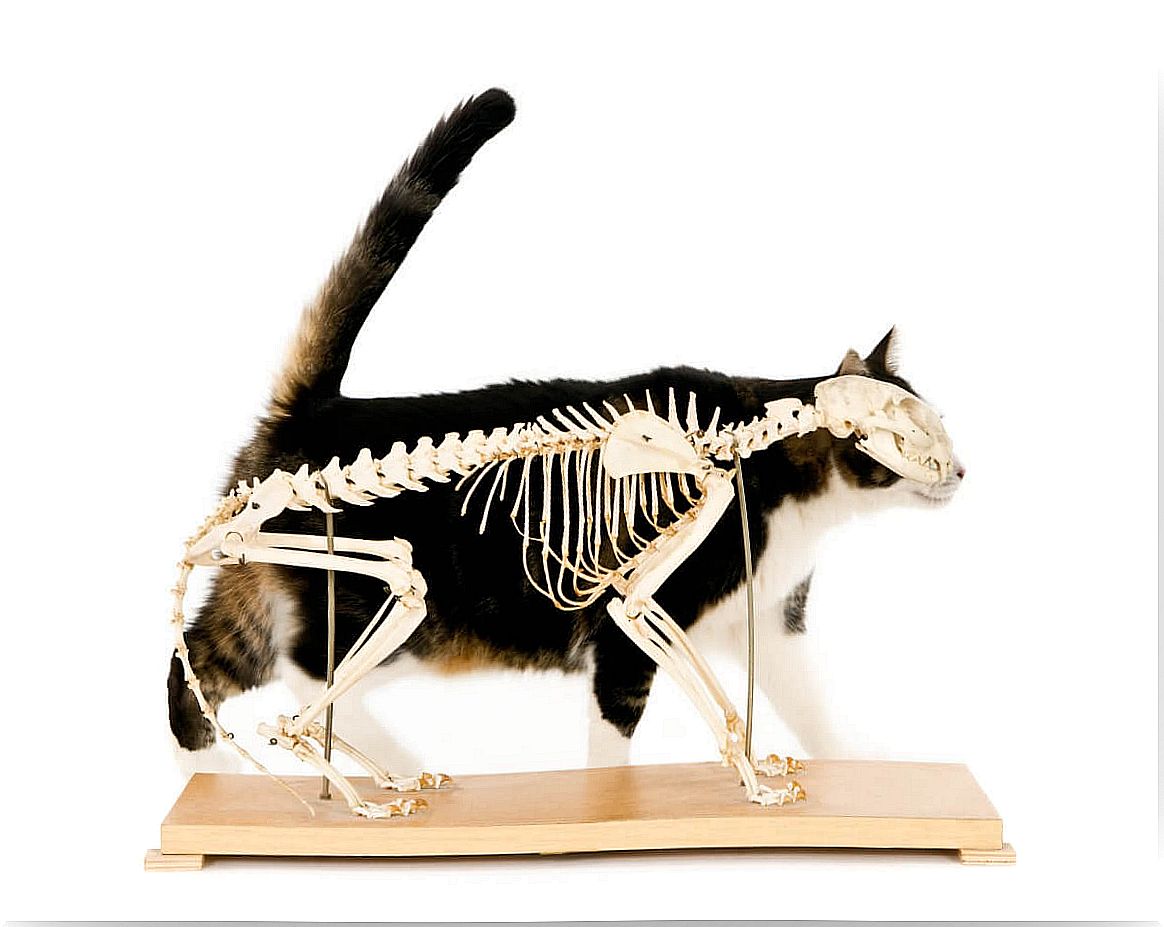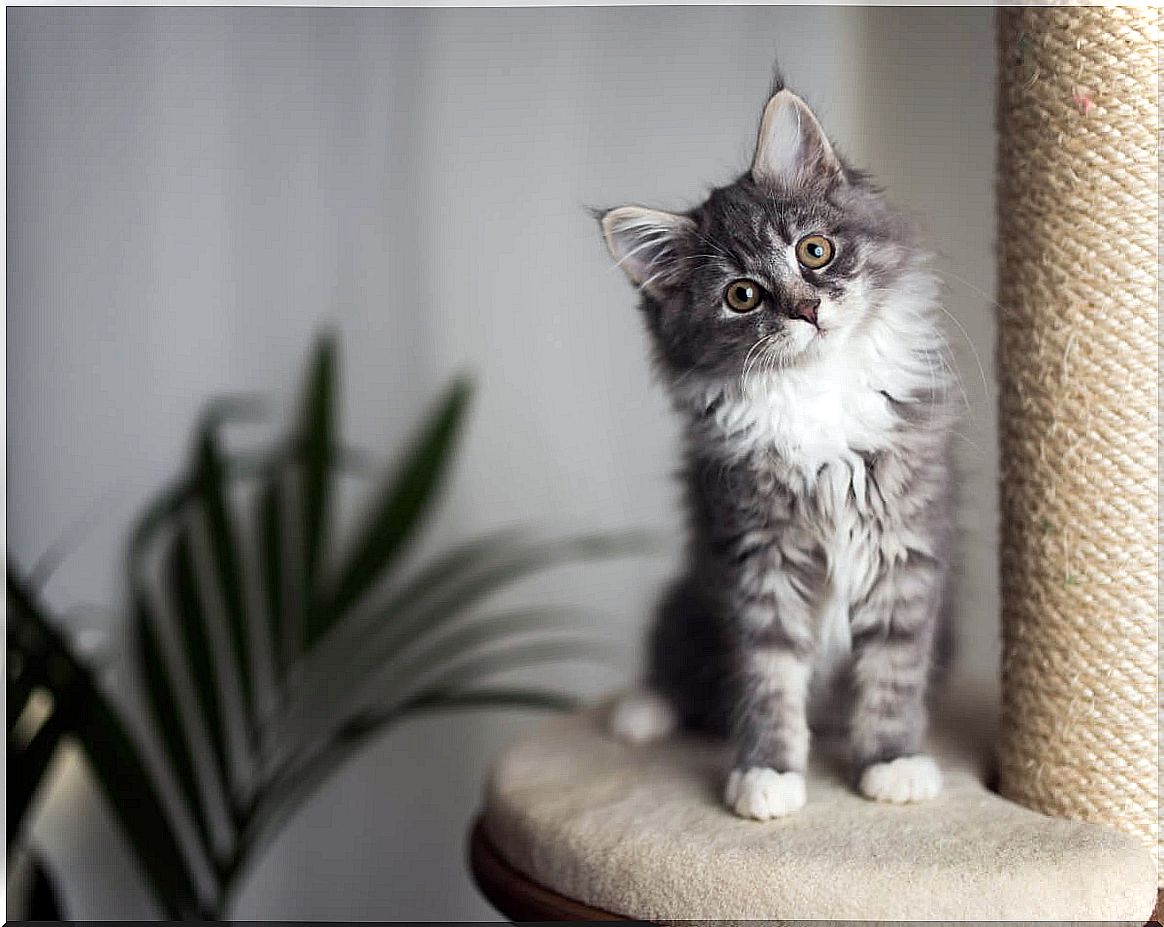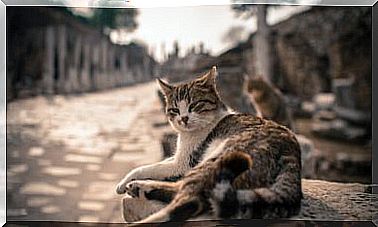How To Treat Rickets In Cats?

Rickets in cats is a pathology that affects bone stability. This disease comes from a nutritional deficit, which ends up causing decalcification of the animal’s bones. If left untreated, rickets leads to softening of the bones and malformations.
Currently, this condition is no longer such a common disease, thanks to the care in the feeding of pets. Even so, it is necessary to pay attention to possible warning signs that help us to prevent and maintain the health of the house animal. Learn more about feline rickets and its characteristics in this article.
What is feline rickets?
Rickets is known as the pathology that softens the bones and causes bone malformations. This arises as a consequence of a deficiency of vitamin D, phosphorus or even by inheritance. The lack of this micronutrient prevents the intestine from absorbing calcium from food, which results in a lack of mineralization of bone and growing cartilage.
Vitamin D is a prohormone that allows the use of calcium. Being reduced, it interrupts the metabolism that allows the bone to calcify. This problem occurs more in small cats than in adults.
What are the causes of rickets in cats?
The main cause of rickets in cats is the lack of vitamin D in the animal’s body. This is generated from a chain of events, with an outcome in which the feline’s metabolism is not able to “harden” —calcify— the bones.
In the first place, this causes a poor use of calcium in the intestine. Since the body detects a serious lack of calcium, the body is forced to remove it from its great reservoir: the bones. In other words, the body needs calcium but cannot obtain it from food, so the bone system is responsible for meeting the demand.
Although its causes can be several, we can group them into 3 main ones:
- Nutritional deficiency: lack of vitamin D in the feline’s diet.
- Heritable: resistance to vitamin D or disruption of your metabolism.
- Derived from another disease: as a consequence of alternate pathologies that cause vitamin deficiency, such as parasitism, intestinal inflammation, etc.

Types of rickets
In a simple way, rickets can be classified into 3 types:
- Deficiency rickets: which refers to a deficiency of Vitamin D, due to causes external to the body.
- Primary rickets: includes congenital diseases, in which there is resistance to vitamin D metabolites.
- Secondary rickets: refers to the fact that rickets is a secondary effect of another disease, such as kidney failure, cancer problems, hereditary hypophosphatemic deficit, etc.
Symptoms of rickets in cats
Although it is little known, it is necessary to clarify that calcium is not only used to strengthen bones, but it is also a common element within cells. In the cellular environment, this mineral is helpful for muscle contraction, coagulation, the functioning of the nervous system, the synthesis of enzymes and many other things.
Due to this, the symptoms of rickets can be diverse. Even so, several of the following clinical signs can be found in felids:
- Deformed limb bones.
- Physical weakness
- Enlargement or reduction in the size of the bones.
- Walking of the committed feline (limping).
- Squatting: a deformation of the legs, bear claw.
- Or bending of the shaft members X .
Diagnosis of the disease
As for the diagnosis, it is necessary that a veterinary professional do it. Although the symptoms may be concise, the physician is required to assess the severity of the disease. Therefore, a physical examination will be carried out to detect any malformations or alterations that it presents. In addition, all this can be complemented with radiographic and blood tests, to understand the state of the feline’s health.
Radiographic diagnosis
Through this test, photographs are taken of the bones . This is intended to detect any manifestation of the disease, from the reduction of the bones, through thickening or malformations, to the enlargement of the growth plate.
Blood biochemistry
Regarding blood collection, the criteria for determining rickets are the following:
- Calcemia is low.
- Phosphorus is high and the “Calcium / Phosphorus” ratio is well below 1.
- Alkaline phosphatase is high.
- There is anemia – 80% of cases present it.
- The concentration of vitamin D or its metabolites is low.
Treatment of rickets in cats
Treatment is usually simple and effective and seeks to compensate for the lack of vitamin D in the system. For this, food supplements are used that improve the levels of both compounds – both vitamin and calcium. In addition, the metabolism of vitamin D requires sunlight for its processing, so exposure to the sun is also necessary.
Your vet will likely recommend an additional deworming process. With this, it seeks to eliminate any other factor that is causing the nutritional problem. The treatment of pain and bone malformations should also be considered, since they are problems derived from rickets.
Remember that any medication or treatment should only be provided by a professional. They are the only ones trained to give your pet the proper care.

You must pay attention to your pet’s diet at all times. Even though rickets is no longer a common disease, you don’t want to cause an unnecessary visit to the vet. Take care of them, take care of yourself and prevent any illness in your home environment.









